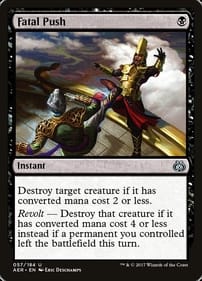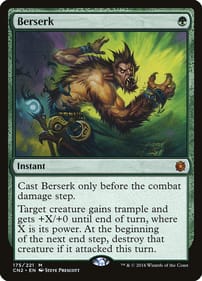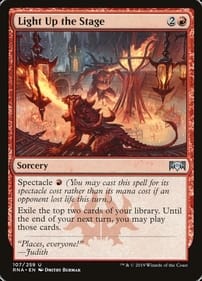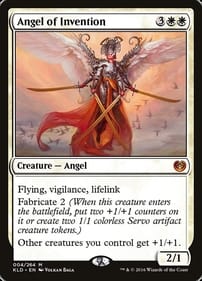Magic: The Gathering (MTG) is a game of depth and complexity, and deck building is crucial to mastering it. While beginners often focus on assembling a basic deck, advanced players dive into sophisticated strategies to gain a competitive edge. In this blog, we’ll explore advanced deck building strategies that can help elevate your MTG game. Whether you’re a seasoned player or looking to refine your skills, these insights will provide valuable guidance.
Understanding Meta and Synergy
Defining the Meta
In MTG, the “meta” refers to the prevailing trends and strategies within the competitive scene. Understanding the meta is essential for advanced deck building because it helps you anticipate and counter popular strategies. A deck that performs well in one meta may struggle in another, so staying informed about current trends and prevalent deck archetypes is crucial.
Deck Synergy
Synergy is about creating a deck where the cards work together harmoniously. Each card should complement the others to form a cohesive strategy. For example, in a combo deck, you might include multiple cards that interact to create a powerful effect. Ensuring that your deck’s synergies are strong will maximize its effectiveness and help you execute your strategy more consistently.
Adapting to Meta Shifts
The MTG meta is dynamic, with shifts occurring due to new set releases, bans, or emerging strategies. Adapting your deck to these changes can give you a significant advantage. Regularly reassess your deck’s performance against the current meta and adjust as needed. This could involve tweaking card choices, modifying your sideboard, or altering your overall strategy to better align with the meta.
Advanced Deck Archetypes
Control Decks
Control decks focus on managing the game state and neutralizing threats. These decks typically feature a suite of counterspells, removal spells, and card draw engines.
Advanced control players excel in disrupting their opponents’ plans while slowly building towards a win condition.
Key strategies include managing your resources efficiently and anticipating your opponent’s moves. Control decks require a deep understanding of game flow and timing, making them a challenging but rewarding archetype.
Aggro Decks
Aggro decks aim to win quickly by applying constant pressure. These decks are characterized by fast, aggressive creatures and spells that deal damage directly.
Advanced aggro strategies involve optimizing your mana curve to ensure a smooth early game, as well as mastering the art of efficient combat and resource management. The goal is to overwhelm your opponent before they can establish a strong defence. Understanding when to push for damage and when to play it safe is crucial for success with aggro decks.
Combo Decks
Combo decks rely on specific card interactions to achieve victory. These decks often include key combinations that can create powerful effects or win the game outright. Building a successful combo deck requires careful planning and precise execution. Advanced combo players must be adept at assembling their combo pieces while protecting them from disruption. It’s also important to include backup plans in case your primary combo is thwarted.
Midrange Decks
Midrange decks strike a balance between control and aggression. They feature a mix of powerful creatures and versatile spells that can handle various game situations. Advanced midrange strategies involve evaluating the state of the game and adjusting your approach accordingly. Midrange decks are known for their adaptability, making them a popular choice for players who enjoy a flexible, well-rounded strategy.

Fine-Tuning Your Mana Base
Mana Curve
A well-constructed mana curve is essential for any successful deck. The mana curve refers to the distribution of cards based on their mana costs. A balanced curve ensures you can play your spells efficiently throughout the game. Advanced players meticulously design their mana curves to avoid mana floods or shortages, aiming for a smooth progression from early to late games.
Land Selection
Choosing the right lands is crucial for maintaining a consistent mana base. Dual lands, fetch lands, and other mana-fixing options can help ensure you have access to the colours you need. Advanced deck builders consider the specific requirements of their deck and select lands that align with their strategy. This might involve balancing the number of basic lands with special lands to optimize your mana base.
Mana Fixing
Mana fixing is the process of ensuring you have access to the right colours of mana. This can be achieved through various means, including mana rocks, fixing lands, and spells that produce mana. Advanced players often include multiple mana-fixing elements to improve the consistency of their decks. This is especially important in multi-colour decks where access to specific colours can be challenging.
Card Advantage and Resource Management
Card Draw Engines
Card draw engines are vital for maintaining a steady hand and avoiding card scarcity. Incorporating cards that provide card advantage ensures you have access to the resources you need throughout the game. Advanced players often include multiple draw engines or ways to filter their draws, improving their chances of drawing into key cards and strategies.
Resource Management
Effective resource management involves using your cards and mana efficiently to maximize their impact. This includes managing your hand size, life total, and board presence. Advanced players excel in making strategic decisions about when to deploy their resources and when to hold back. Proper resource management can make the difference between victory and defeat, especially in longer, more complex games.
Counterplay and Disruption
Counterplay and disruption strategies are crucial for handling your opponent’s threats and plans. This can involve counterspells, removal, and other forms of disruption to mitigate your opponent’s strategy. Advanced players are skilled at anticipating their opponents’ moves and responding effectively. Mastering these strategies helps you stay one step ahead and maintain control over the game.
Testing and Refining Your Deck
Playtesting
Playtesting is an essential part of deck building. Testing your deck in various scenarios and against different opponents helps you understand its strengths and weaknesses. Advanced players conduct extensive playtesting to refine their decks and address any issues that arise. This process involves playing games, analyzing performance, and making adjustments based on the results.
Analyzing Results
After playtesting, it’s important to analyze the results to identify areas for improvement. This includes evaluating how well your deck performs against different archetypes and strategies. Advanced players use this analysis to fine-tune their decks, making changes to enhance performance and address any weaknesses.
Adjustments and Iterations
Deck building is an iterative process. Based on your playtesting and analysis, you’ll need to make adjustments to your deck. This might involve changing card choices, altering your mana base, or modifying your strategy. Advanced players embrace this iterative approach, continually refining their decks to optimize their performance and adapt to changing metas.
In Summary
Advanced deck building in MTG involves a deep understanding of the game, strategic planning, and continual refinement. By mastering the meta, optimizing deck archetypes, fine-tuning your mana base, managing resources, and rigorously testing your deck, you can elevate your gameplay to new heights. Keep learning, adapting, and experimenting to stay ahead in the competitive world of MTG.
For personalized deck-building advice or to explore the latest MTG products, contact us at Obsidian Games to get expert assistance and enhance your gameplay.






